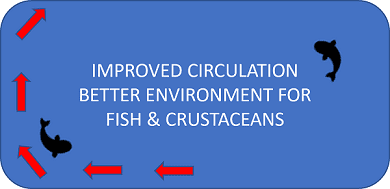Different Pond Shapes
The shape of a pond can be crucial to what use you had in mind. Also the shape can heavily impact the amount of work needed, vegetation and inhabitants, maintenance and overall functions.
Here we go about different pond shapes and their pros and cons.
Square Pond
Ponds built as a square are more suitable as a garden ornament where you might want to uphold clean lines and with the purpose of presenting a reflecting water surface.
But, if you're looking to keep crustaceans or fish, the square pond shape is not optimal. Even some pond plants can have a harder time thriving in such a design.
A square pond can easily create "dead areas" where no aeration or circulation happens which makes it a worse environment for animals and plants. This is especially if you plan on using streaming aeration (jet streams or pump flowing). But even with bottom aerating systems (like air stones) you might need to use additional products which gives a higher investment as well as maintenance costs.
Alternative: Square Pond with Softer or Trimmed Edges
If a square pond shape is what you really want and looking to inhabit it with wildlife and plants you should really consider trimming the edges into a radius.
This way you will greatly improve the circulation and environment for the animals.


